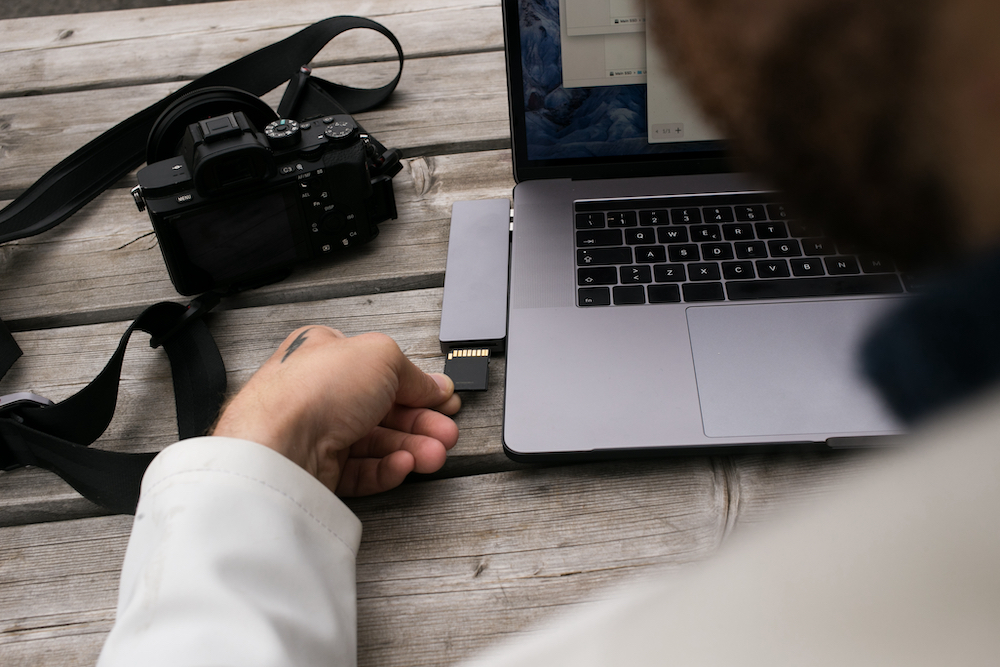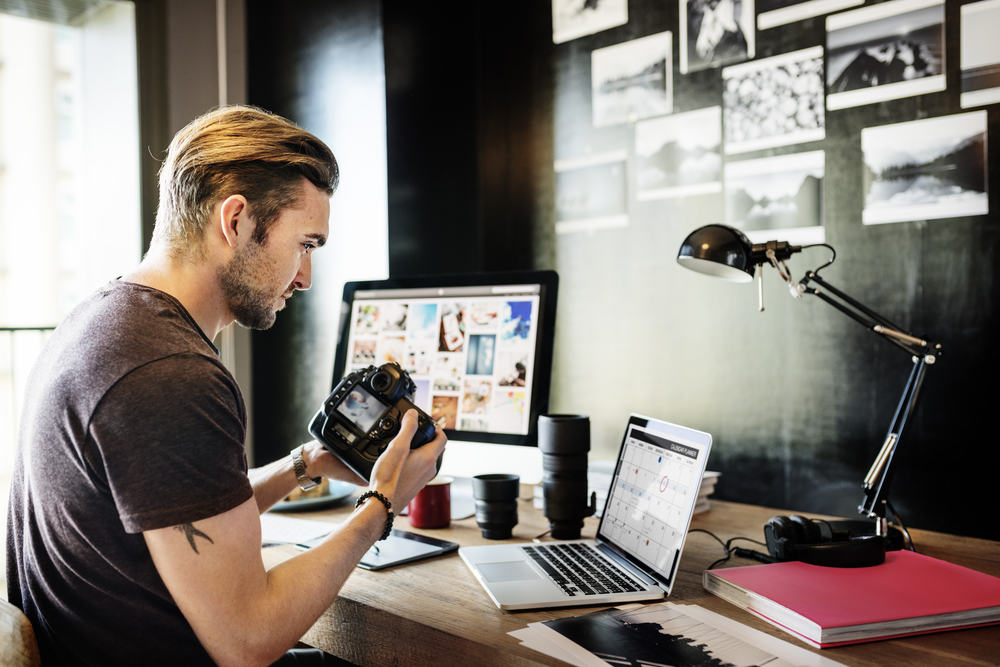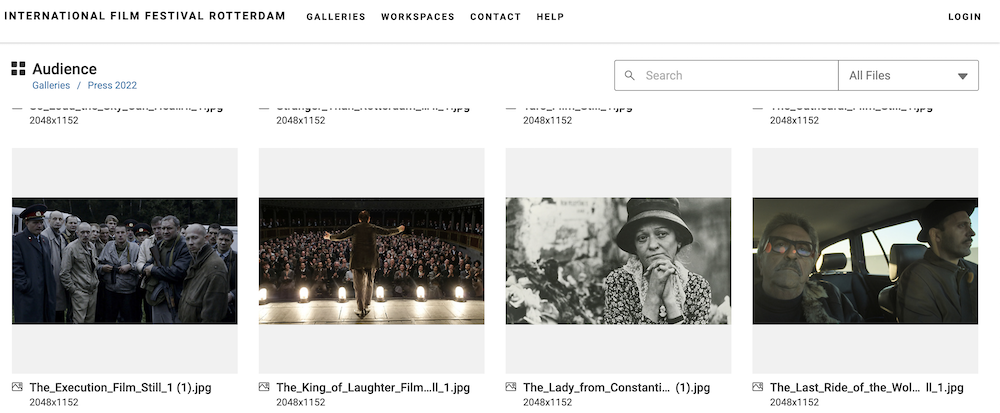Whether it’s a concert hall, a music festival, or a theme park, one thing all these organisations have in common is their two-step goal: the need to attract visitors and provide them with the best experience once they get to the venue.
In the European and UK markets, creative marketing teams at event organisations and venues collaborate with tech companies to create new experiences for visitors. They push the boundaries by exploring and leveraging leading-edge technology like virtual reality (VR) and the use of digital avatars at live events.
On the other hand, more traditional venue organisations like the Royal Albert Hall, The Royal Shakespeare Company in England, and The International Film Festival Rotterdam in the Netherlands, have embraced and invested in robust tech tools like digital asset management to enhance their visitor’s experience.
But, before they even get visitors to the main attraction—how do these varying venues manage their brand image and share their brand story far and wide?
Attracting and Engaging Visitors with Visual Assets
From a visitor’s perspective, the expectation is that they will have a great experience throughout their duration at a venue or event. From the moment they visit a website to buy a ticket to the moment they step into the venue to enjoy the event, you want your visitors to feel fully immersed, engaged, and entertained.
Creating a memorable experience for your visitors – one they can’t stop talking about or sharing on social media– is what will drive them to keep coming back for more. To make this happen, creating impactful visual content that visitors can engage with throughout all the touchpoints is key.
So, for a business that must consistently produce hoards of content to promote events and engage visitors throughout their venue experience, how do you organise all your content to make sure it’s readily available to use and share?
Storing, Finding, and Sharing Your Content with a DAM
In addition to having an existing media archive documenting the events and celebrations that have taken place over the years, venues also create custom content that vary by format, file type, and file size. Oftentimes, the media archive for a venue is stored in multiple locations, such as file servers, USB disks, consumer-grade file storage solutions like SharePoint, Google Drive, and even your desktop!
Having content in disparate places makes searching and finding the content very challenging– and it slows down your content production workflow, wasting money and therefore impacting your visitor experience.

In many cases, the marketing or social media teams are faced with the daily frustration of having to search and find images. They also have to provide guidance to the rest of the organisation on which images are suitable to use for an upcoming event, for example, and they’re often tasked with doing image research for other teams who don’t know where the content lives.
If these teams don’t have the right tools to manage this process, daily questions coming into the marketing team like ‘what images can we use to promote the summer jazz concert?’ will often be greeted with very confusing answers.
Without a digital asset management tool like PhotoShelter, the knowledge of where your best brand images live and which images have been approved for social media or properly licensed, is usually stored in the heads of your team members.
Centralising your media archive, tagging your files for easy retrieval, and documenting how to store and use media can take time, but making sure everyone in your organisation is equipped to tell the brand’s best story is paramount for a venue’s success.
RELATED CONTENT: How One Small Museum Launched a Global Campaign to Celebrate 100 Years of National Youth Culture
How DAM Fits into Your Daily Work
Once a digital asset management library is being leveraged, venues can streamline their content production workflows, as well as manage their brand story, and how they share it with visitors.
If we look at the scenario of a concert venue, here’s how a digital asset management solution would help various departments:
The Marketing Team
A DAM enables marketing managers to have a clear overview of what assets are available, whether the necessary revisions have been made, and where they are in the approval process.
Large events and visitor attraction organisations often professionally photograph hundreds of events a year. For the marketing team, being able to clearly organise these images and highlight the strongest ones to be used in promotional materials and event campaigns makes the whole process so much easier.

Using a DAM like PhotoShelter means great images from the photographers get to the eyes of fans of artists and performers quickly and seamlessly.
Here’s how it works:
- With PhotoShelter’s real-time workflow functionality, venues that use an FTP can transfer content from their media team’s photographer’s cameras or video cameras and into their DAM library in seconds.
- With PhotoShelter AI, metadata gets automatically attached to your event images as they get uploaded, making your images easier and faster to find. Once the metadata tags are automatically applied to the images, PhotoShelter users can browse or search for photos of artists, concerts, or events to instantly find relevant images for their needs. For example, a quick search for “8 July”, and “summer” can give you images for the summer jazz festival in 2022.
The Social Media Team
Being able to capture the power of a moment is what creates memories that will make your visitors remember their experience for years to come. Having easy access to those memories so that they can be shared is the organisational goal. This is where the social media team comes in. Whether it’s music fans or your theme park visitors, they all want to have the ability to share the excitement of the experience by engaging with content on your social channels before, during, and after the event.
Using PhotoShelter’s integrations with tools like Canva and Hootsuite, your social media team can browse and select images from their PhotoShelter Library to make custom content to share with visitors instantly. In Canva, social media editors can easily create on-brand and impactful graphics for sharing on social. With Hootsuite, you can browse and search your PhotoShelter Library for images of your event and share them on social instantly without having to download them first.
The PR Team
You may need to make content available outside your events or visitor attraction organisation to a wider group of people, for a multitude of reasons – an open press/PR centre, or brand hub.
When distributing assets, many PR teams resort to using generic file transfer solutions such as WeTransfer or Dropbox, but the initial ease of use often turns to loss of control and wastes time. Using PhotoShelter portals you can offer a branded space and manage permissions for the publisher or the media. Plus, it requires minimal maintenance after getting set up, and is way more navigable for a user.
Here’s an example of how the International Film Festival Rotterdam uses its PhotoShelter Portal to share assets with members of the press.

The Box Office and Other Collaborators
The box office team plays a key role in your visitor experience. Not only do they manage ticket distribution, but they also provide visitors with information that will enhance their experience.
Using PhotoShelter, your box office team can search and find ‘view from your seat’ pictures to send to customers who are unsure of the view their seats will offer. Additionally, for many shows, the box office team often gets exclusive photos from their photographer, which they can upload to the PhotoShelter library. They can then email them to the customers who booked tickets to a show via the box office as a ‘thank you’ for coming.
But There’s More!
The benefits of having a powerful DAM reach other teams too. For example, the hospitality team can highlight their preferred food and drink photos, the programming team is able to share assets from their library with external show producers, and the production and technical teams can store all types of pictures showing the state of their equipment over the years.

Preserve Brand Memories for Future Generations with a DAM
Creating experiences and capturing the power of a moment that visitors can enjoy and look back on in the future is what makes having a DAM like PhotoShelter so crucial for venues.
It’s always special to look back at assets from specific years to get a snapshot of events as they happened. Having a visual record of the clothes, the shows, the artists, and the press clippings can help you see how you have evolved as an organisation and fit in amongst all the changes since you opened.
With a DAM, the opportunities to engage with visitors extend well beyond the event. You can create brand memories that are forever stored for future generations to enjoy.
When you have multiple visitor attractions and hundreds of events to organise and promote, PhotoShelter helps your team control and organise your valuable content – and gives your teams the smart tools to be able to tell your story and share it with your visitors.
We work with some of the largest event and visitor attraction organisations around the world, so we’re excited to show you how your team can cut out steps, save time, and open up a world of possibilities for your brand’s biggest moments, too!


